Best Green Lantern stories of all time
The best of the best of the ring-slingin' Green Lanterns
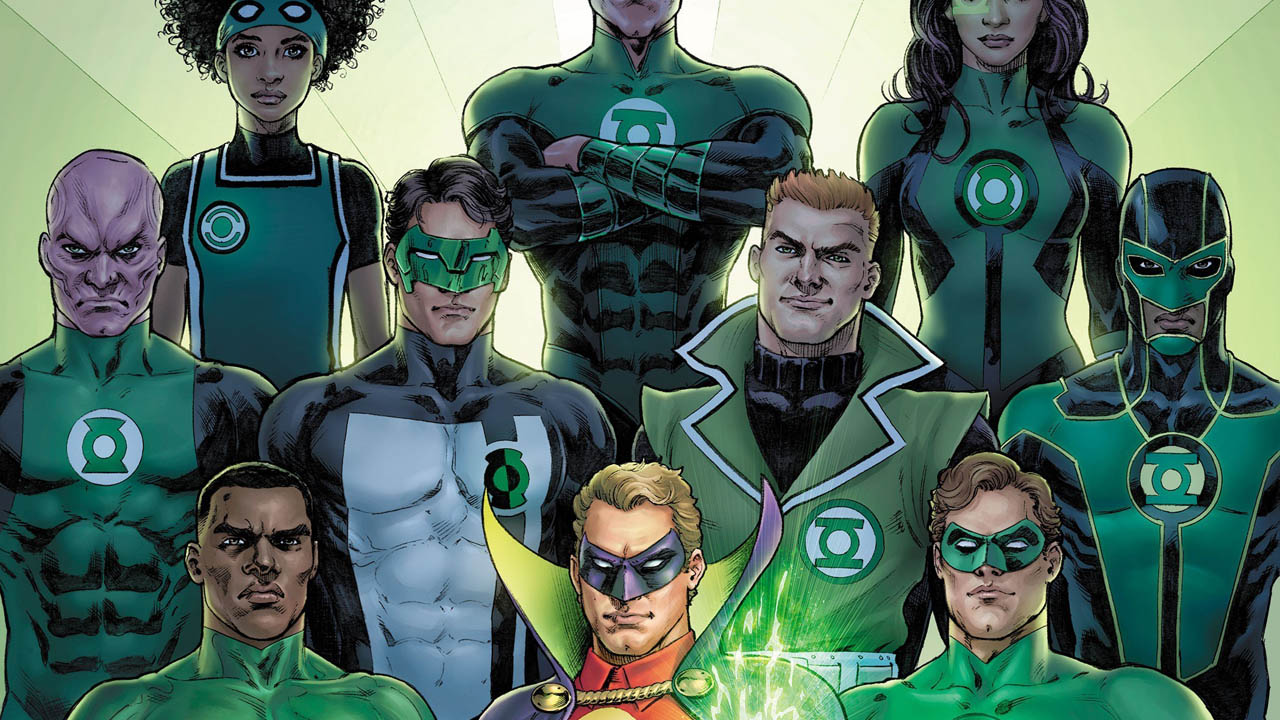
With the near-unlimited power of imagination and the ability to roam the cosmos, Green Lantern is the kind of superhero we could all stand to get to know better after the year we've had.
But with 80 years of history and countless power ring-bearers (see our list of the best Green Lanterns), that's a whole lotta issues to get through.
To make things easier, and on the eve of welcoming all-new Lanterns to the DC Omniverse thanks to 'Future State' and Infinite Frontier, Newsarama is looking back at the best Green Lantern stories of all time.
10. Blackest Night
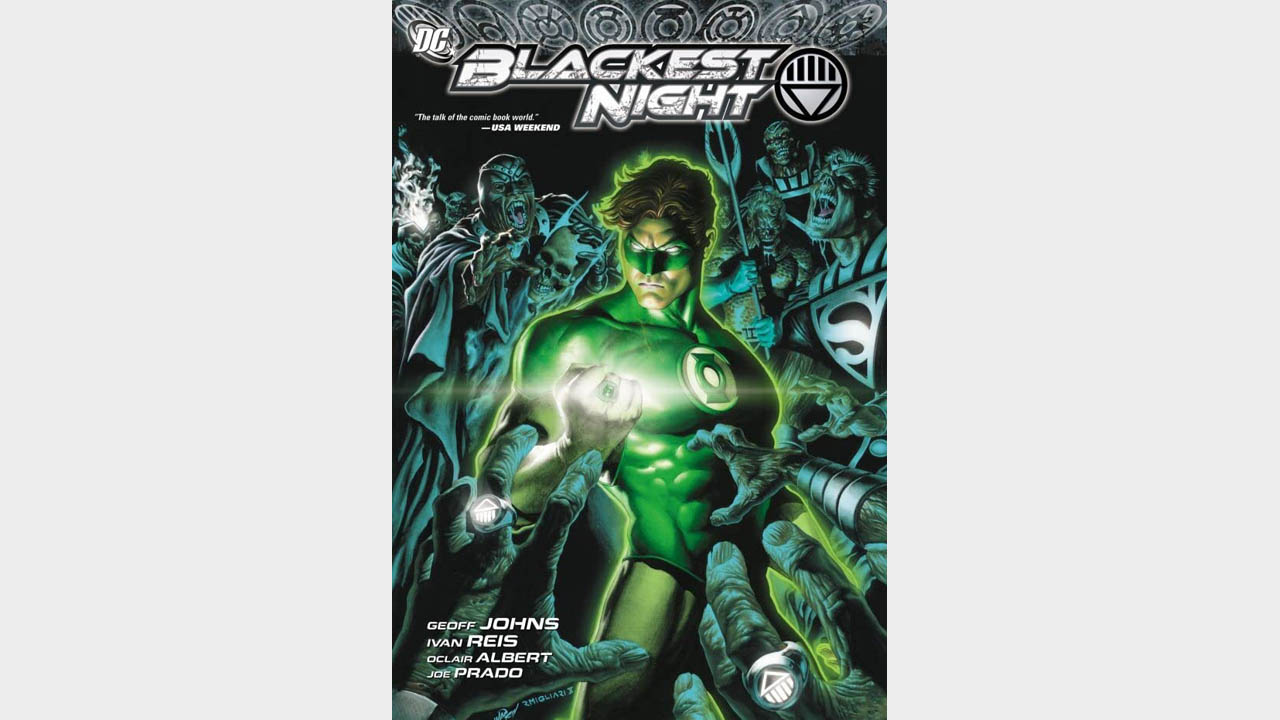
Zombified DC heroes are a monthly occurrence thanks to Tom Taylor's hit DCeased, but Geoff Johns and Ivan Reis got there first with the epic event Blackest Night. When Black Hand strikes the graves of the DC Universe and imbues the dead with the power of the Black Lantern rings, it's up for the living to unite the seven Corps to form white light and vanquish Nekron, the entity of the Black.
Throughout his long run on Green Lantern, Johns slowly but steadily introduced the different powers of the emotional spectrum. With Blackest Night, he properly introduces Black Lanterns and White Lanterns to complete the color-coded power spectrum and solidify the mythos.
Often relegated to bit parts in DC's line-wide summer events, the Green Lantern Corps were at the core of Blackest Night, a universe-spanning catastrophe that saw loved ones rise from their graves to torture the living. When White Light was revealed as the reason for existence itself, Blackest Night became an incredibly important block in not just Green Lantern history, but in the history of the DC Universe itself.
Illustrated beautifully by Ivan Reis, Blackest Night is a horror-infused blockbuster worthy of a place on your shelf.
Comic deals, prizes and latest news
Get the best comic news, insights, opinions, analysis and more!
9. Green Lantern: Emerald Twilight
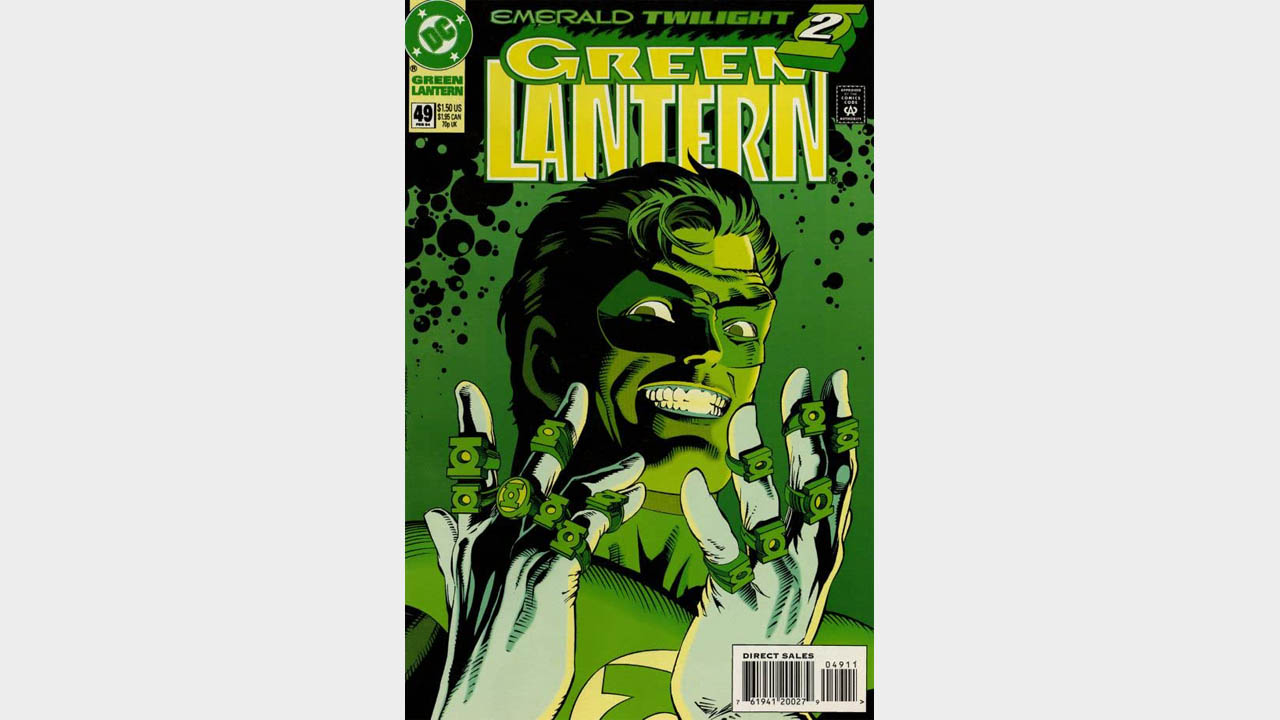
Wracked with loss and rage following the catastrophic loss of his home of Coast City, Green Lantern Hal Jordan attempts to recreate it through sheer force of will.
Power hungry and in betrayal of his oath to not use the ring for personal gain, Hal wages a one-man war on Oa to revive his lost home. He dispatches the entire Corps and the Guardians fall after transferring their energy into one sole survivor. Finally, Hal Jordan absorbs the power of the central battery and emerges as a newly established villain – Parallax.
Green Lantern: Emerald Twilight is the ultimate fall from grace story. Reinventing the once calm and responsible Hal for the chaotic '90s, 'Emerald Twilight' is a classic case of 'this time, the bad guy wins!'
Writer Ron Marz challenges us to wonder how far we would go to save our loved ones while forcing us to watch the once-rational Hal Jordan's descent into madness. Darryl Banks' Green Lantern #49 cover art, bearing that infamous image of a wild-eyed Hal flaunting the rings of his fallen fellow Lanterns, is an all-time classic.
Incredibly controversial at the time and a raw and emotional read to this day, 'Emerald Twilight' is an intensely memorable Green Lantern tale.
8. Secret Origin of the Guardians!
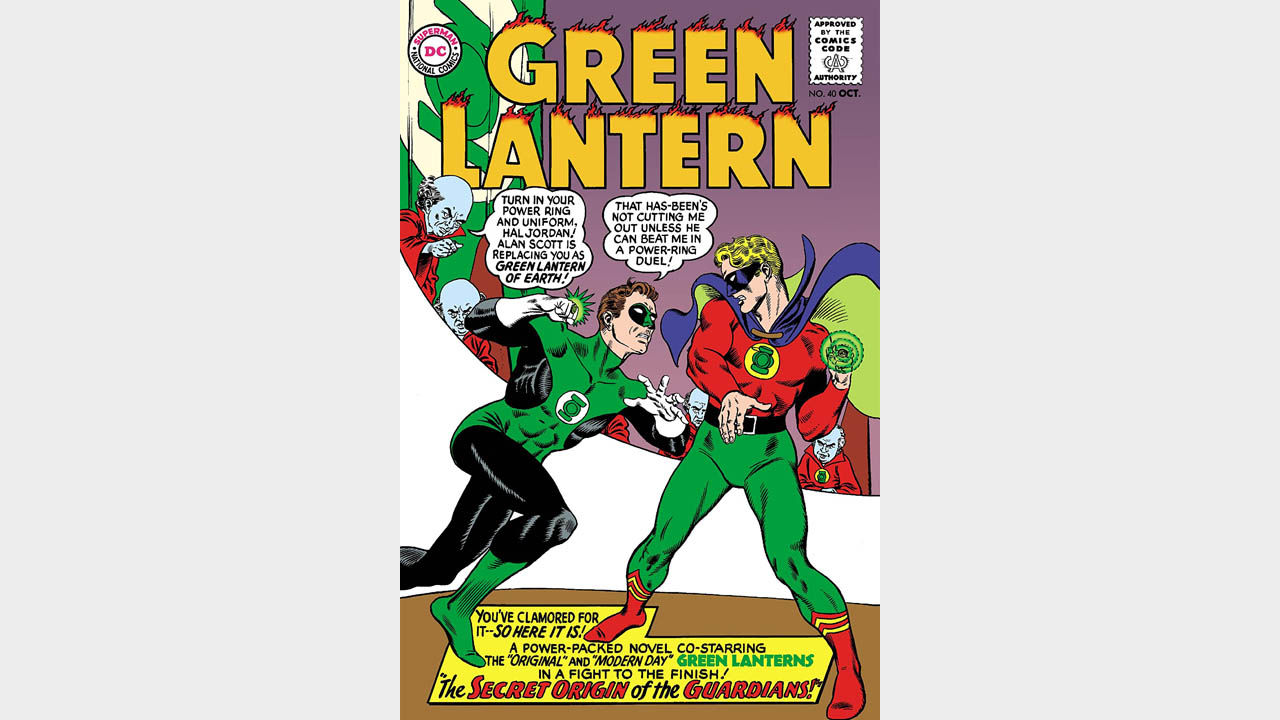
The start of the Silver Age saw DC's new wave of heroes meet their Golden Age predecessors, first hammered out properly in 1961 with Gardner Fox and Carmine Infantino's 'Flash of Two Worlds!'
But it was 1965's Green Lantern #40 that brought Earth-One and Earth Two's Green Lanterns together for the first time in an influential story that paved the way to the Multiverse as we know it now. Featuring the first appearance of Krona, the father of the Multiverse, as well as the origins of the Guardians of the Universe, this is a key building block to the foundations of the DC Universe as we know it today.
Historical importance aside, Infantino and Fox deliver a masterclass in silver age artwork and narrative in a wild single issue that features high concept science fiction weaved into the classic superhero team-up structure.
Read it and marvel at just how much story is packed into its pages. And for just 12 cents!
7. 4. 3. 2. 1.
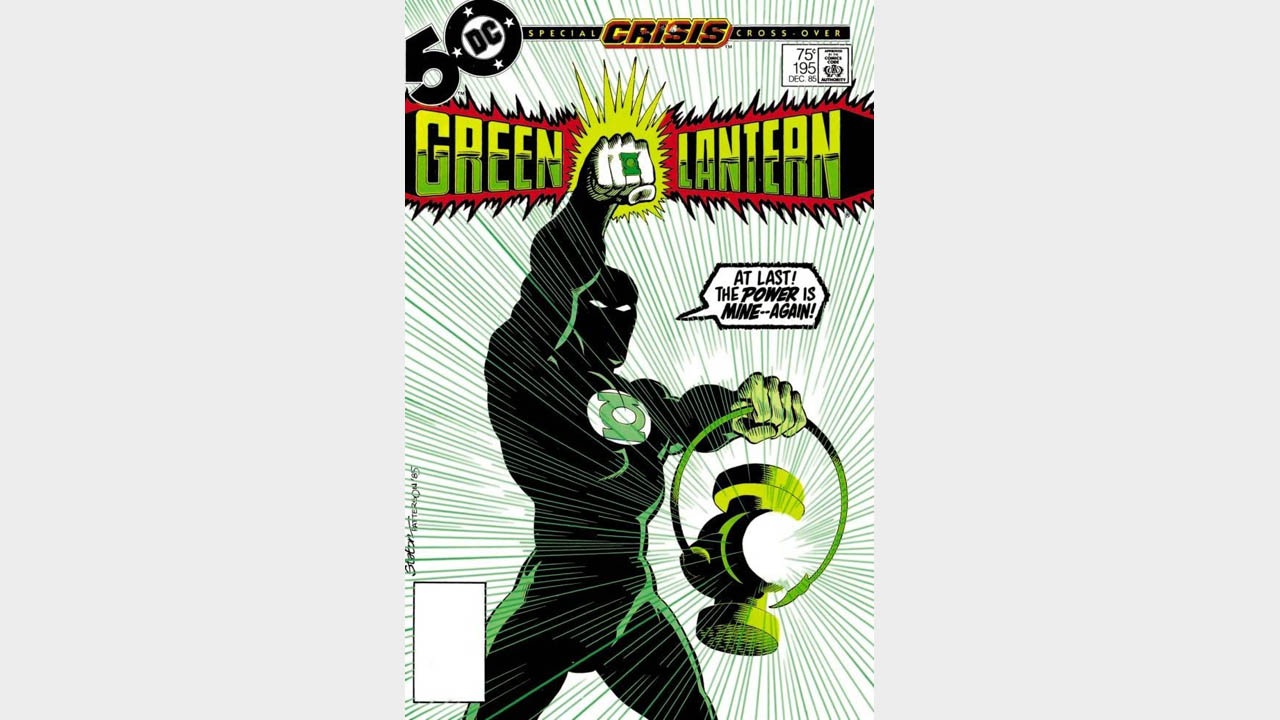
When the anti-matter universe during Crisis on Infinite Earths causes the Green Lantern Corps' Central Power Battery to run dry, the Guardians of Oa take drastic measures. They summon Guy Gardner, gift him with what little back-up power remains and task him with building a team to take on the Anti-Monitor.
This goes poorly.
Guy's inexperience and sheer arrogance make for a deadly combination, and he soon butts heads with the freshly established John Stewart. Issue by issue, alignments change as the Lanterns pivot with the events of Crisis until it's up to Sinestro and John Stewart to face off against Hal Jordan and Guy Gardner.
Tying into Crisis on Infinite Earths, this four-part epic that ran through Green Lantern (Vol. 2) #195 - #198 combines narrative symmetry with bold ambition to produce a tidy sampling platter of the first three Earth Lanterns.
Writer Steve Englehart wisely sticks Hal Jordan on the sidelines, giving him his rightful place as rational elder statesman. His John Stewart is a hero triumphant, just entering his prime. His Guy Gardner is impulsive and short-sighted, but a worthy foe.
Each issue is simply titled with a number, counting down from 4 with a slow sense of theatrical dread. Englehart's penchant for highbrow art comes through here, referencing influential philosophers and artists at each issue's opening splash page to provoke us to dig a little deeper into each issue's themes. Visually, Staton and Patterson's gritted teeth and warped anatomy reflect the Lanterns' frustrations in the face of the psychedelic crisis.
All in all, this story makes a confident statement that Earth needs more than one rightful Green Lantern.
6. S.O.S Green Lantern
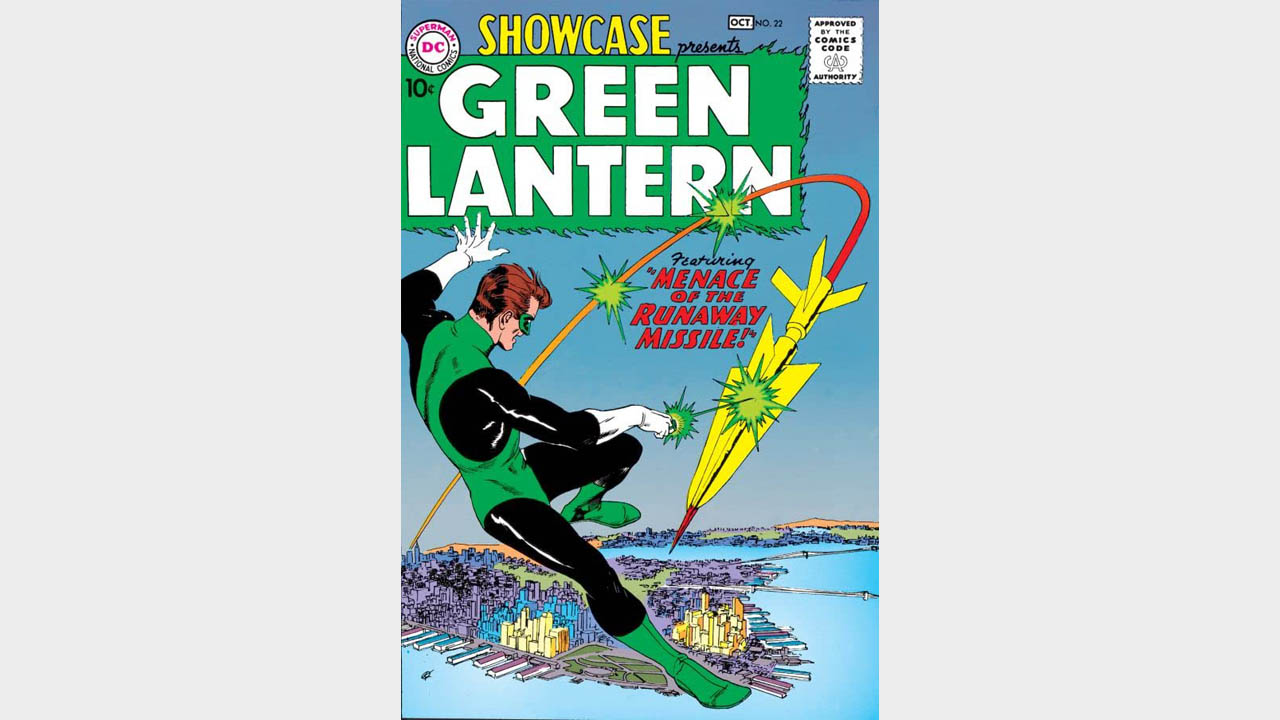
As part of DC's silver age rejuvenation, the magical and flamboyantly dressed Green Lantern was completely reimagined by John Broome and Gil Kane in Showcase #22.
With a sleek costume redesign and a fresh and contemporary cosmic origin, Hal Jordan burst on to the racks in October 1959 in a flash of jet planes and purple aliens. In just six pages, Broome and Kane masterfully tell the story of a fearless jet pilot who inherits the power to manifest his imagination into reality.
Focused squarely on winning over attention-starved children, this short and sharp origin is a masterclass in storytelling efficiency and lightning pace.
Gil Kane's portraits, clearly studied from life, communicate the somber determination that would become the bedrock of Hal Jordan's character. This story would go on to be retold hundreds of times across many formats, but there's no beating the original.
5. Snowbirds Don't Fly & They Say It'll Kill Me… But They Won't Say When!
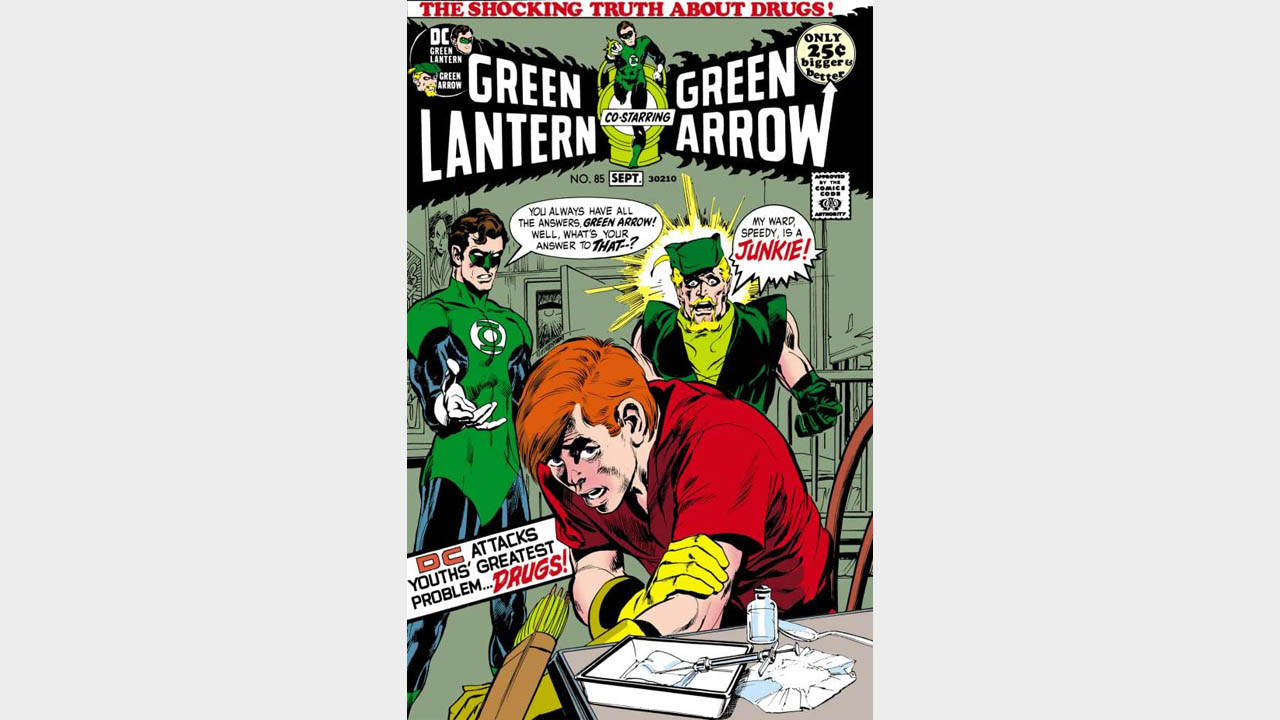
Denny O'Neill and Neil Adams' socially conscious two-parter in Green Lantern/Green Arrow #85 and #86 is infamous for its unusually (for the time) realistic look at addiction.
Dripping with the atmosphere of the murky '70s, this is a sordid tale of Green Lantern and Green Arrow's fight against the horrors of heroin. When a drug bust uncovers an unlikely addict in Green Arrow's young ward Speedy, it's up to Hal Jordan to help the teenager kick the habit.
Hal Jordan might be DC's resident man without fear, but the thought of losing control is terrifying for him. Denny O'Neill cleverly turns the drug into Hal's worst nightmare when the power of the ring manifests the horrors of the drug into a Grundy-esque caricature of the proud Green Lantern.
Although this landmark story is a little dated by modern sensibilities, its heart is in the right place. Neil Adams' fluid sense of movement and Denny O'Neill's fresh perspective on what comic book storytelling can achieve makes for a compelling read.
This two-parter is prime Daddy Hal Jordan, as well as an important and successful attempt at tackling real-world issues.
4. Tales of the Green Lantern Corps – Mogo Doesn't Socialize
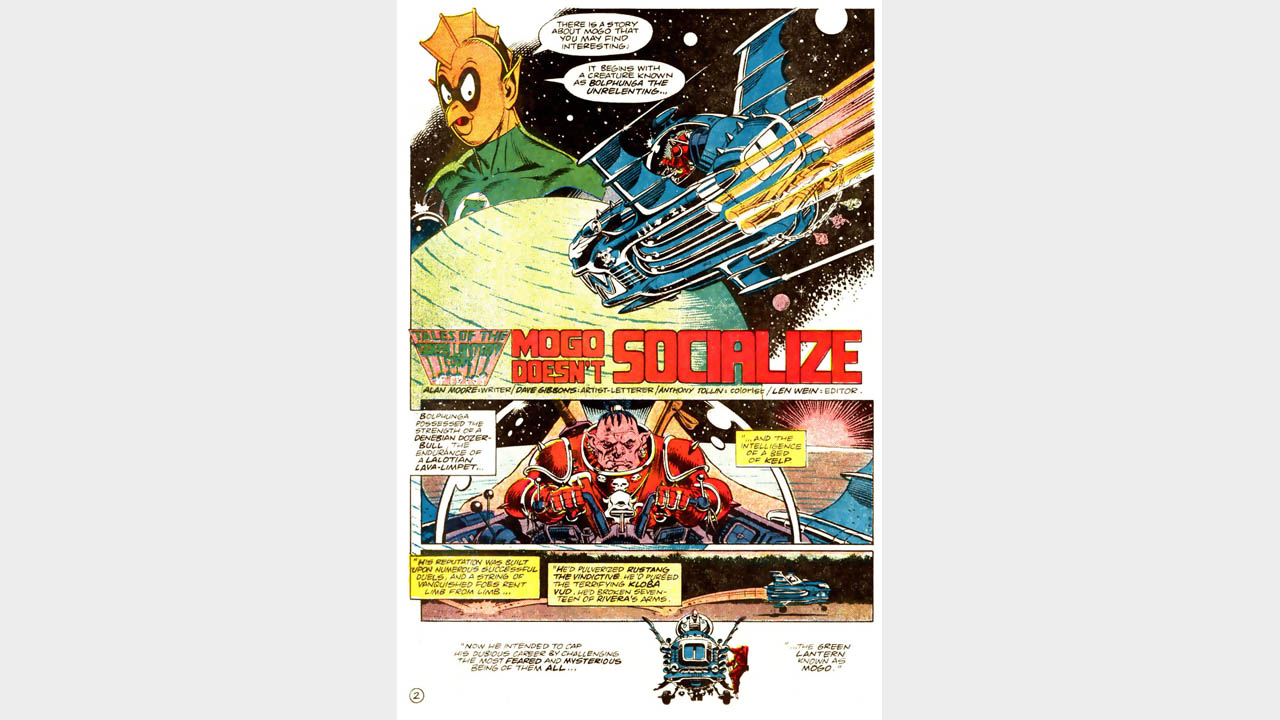
Living legends Alan Moore and Dave Gibbons brought a slice of eclectic British sci-fi to the American comic book market in 1985's Green Lantern volume 2 #188.
Framed as a story told by Tomar Re to a young Lantern, Moore tells the story of an alien barbarian who searches a barren planet on the hunt for Mogo, a member of the Green Lantern Corps. After many years of searching he discovers the horrible truth, Mogo IS the planet.
Moore's unique perspective widened the possibilities of what a Green Lantern could be in this genuinely funny short story that flexes Moore's talent for the twist that he developed in the early stages of his career at 2000AD.
Gibbons' character-filled artwork shows off his talent for evocative gesture and bold design work, his Mogo persisting through the decades. A triumph of humor from the Watchmen creative team, 'Mogo Doesn't Socialize' is a small but perfectly formed slice of silliness.
3. Beware My Power!
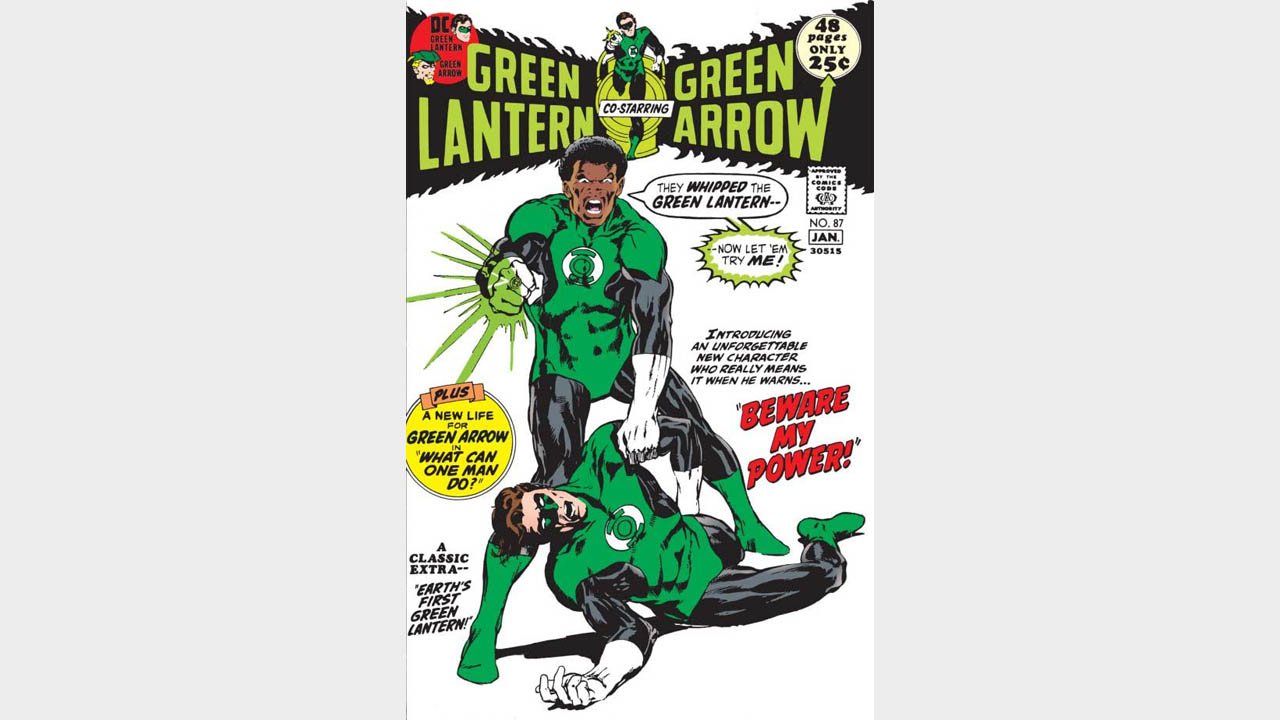
Hal Jordan was chosen to be the first Green Lantern of Earth, but there was another. The Guardians of Oa chose Guy Gardner as Hal's successor, and when he becomes injured in a bus crash, Earth is without a back-up Lantern. Enter: John Stewart!
Green Lantern #87's 'Beware My Power!' is an uncomfortable narrative of racial bigotry and what power truly is. Even today, it strikes a chord. Another raw O'Neill and Adams joint, they explore what happens when free speech turns hateful.
Hal and John team up to stop a presidential candidate from whipping up a racially instigated civil war in a plotline that could easily still be on the racks. John's refusal to wear a mask is a powerful statement on taking responsibility for your own actions, and his anger at the system seems justified and well-placed. Hal plays the stuffy old man to John's fiery justice here in an unforgettable origin story.
Amazingly, this issue directly follows the 'Snowbirds Don't Fly' arc. O'Neil and Adams didn't just make comic book history once with their Green Lantern run, they did it month after month.
2. The Sinestro Corps War
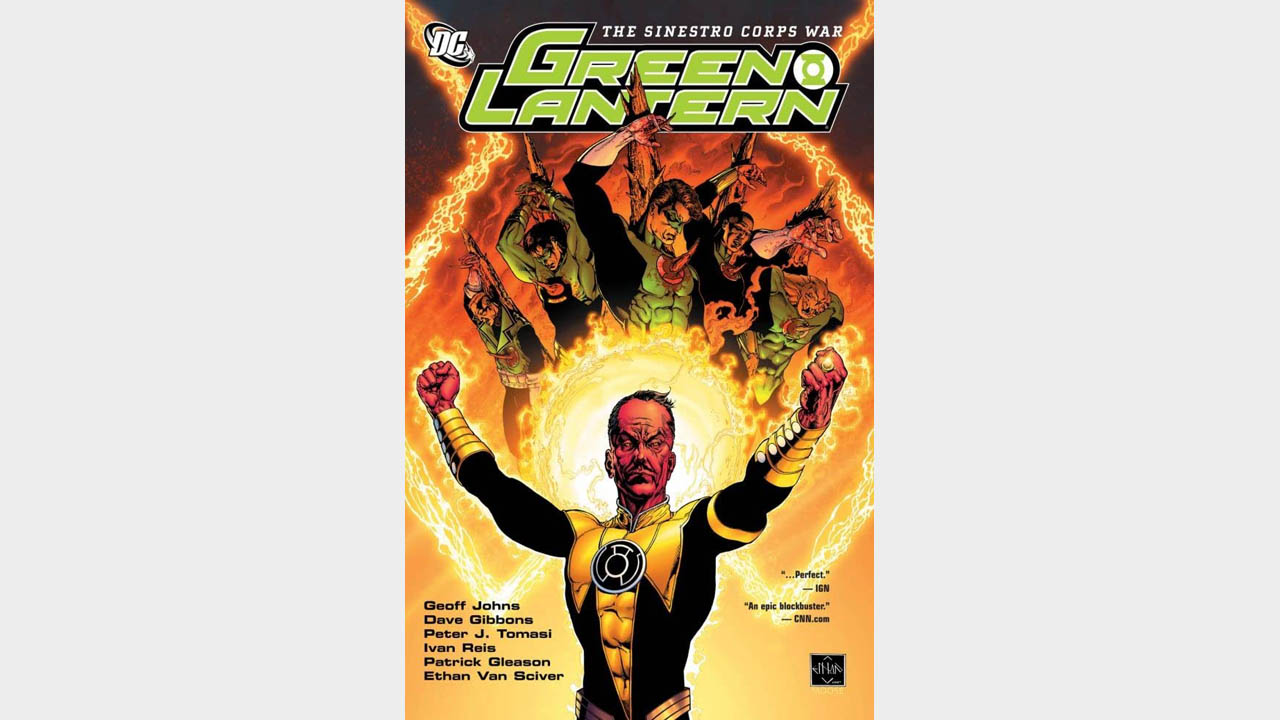
The pièce de résistance of Geoff Johns' ground-breaking run that began with Green Lantern: Rebirth and concluded with Blackest Night, the massive crossover The Sinestro Corps War zig-zagged between Green Lantern and Green Lantern Corps in 11 meaty parts.
Green Lantern's arch enemy Sinestro amasses a yellow army of fear to wage war with the corps. In the ensuing epic battle, the fundamental laws of the Green Lantern Corps are rewritten, the emotional spectrum of light is introduced and an entire legion of Lanterns are slaughtered.
The Sinestro Corps War marks the expansion point of modern Green Lantern lore. Geoff Johns introduces new concepts that have defined the Green Lanterns Corps in the '10s, hooking in villains from the wider DC Universe as members of the malevolent Sinestro Corps.
The sheer scope of The Sinestro Corps War was unparalleled, as Johns brought large scale cosmic warfare to rival the best of Star Wars. The arc's final image, that of a black power battery, sets the stage for Blackest Night and marks The Sinestro Corps War as a violently important story. Everything changed here.
1. Green Lantern: Earth One, Volume One
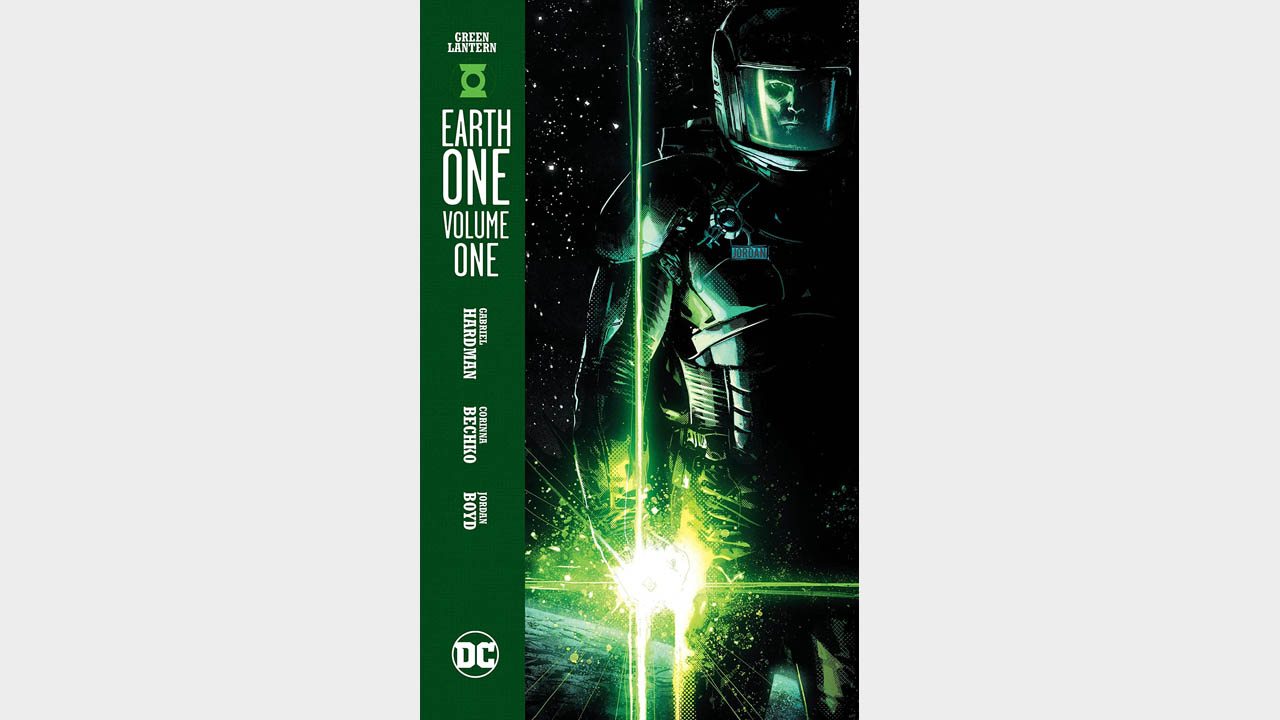
Reimagining Hal Jordan as a self-isolating astronaut in the cold and blank desert of deep space, Corinna Bechko and Gabriel Hardman mash-up the Green Lantern mythos with the naked future capitalism of Alien in a stylistically stunning standalone volume of Green Lantern: Earth One.
Bechko and Hardman paint a portrait of a Corps shattered, the Green Lanterns almost extinguished by the robotic Manhunters. In a powerful statement of intent, this Hal Jordan pries his power ring from Abin Sur's dead hand. Anyone can wield this universe's power rings, placing the focus entirely on the strength of the wielder. Far from the proud space cops they are in the main DC Universe, Earth One's Green Lanterns are hobbyists pantomiming a long-dead way of life.
Earth One is a cold dystopia, as emphasized by the scratchy reality of Hardman's evocative artwork. He and co-writer Bechko take us into a universe of oppression and slavery and forces us to watch as Hal Jordan carefully navigates the pains of an uncaring universe to trigger an uprising against the Manhunters and re-establishes the Green Lantern Corps.
With its wide, cinematic panels and grounded feel, Green Lantern Earth One Volume 1 is the perfect introduction to comic books for new readers and an original new vision for one of DC's finest heroes.
Oscar Maltby has been writing about comics since 2015. He has also written comic book scripts for the British small press and short fiction for Ahoy Comics. He resides on the South Coast of England but lives in the longbox.



